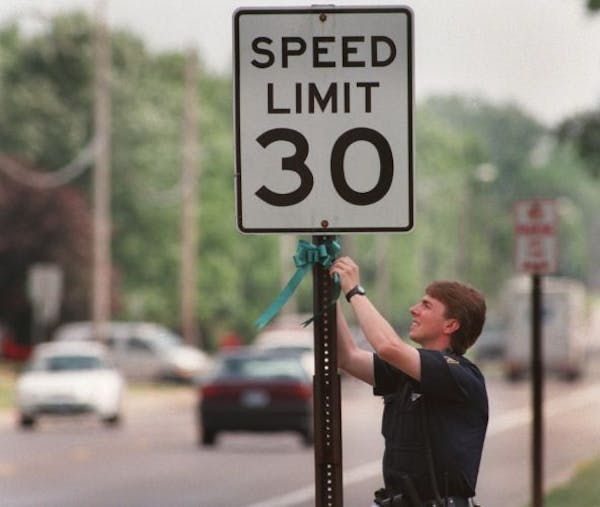Counterpoint
Much has been written in these pages the last two weeks about speeding on Minnesota roads, but the commentary "Why we speed" (April 8) deserves a response.
The writer makes a case for justifying speed by articulating that drivers are looking for the "sweet spot" of traffic flow -- the place between safety and fuel efficiency and getting us from point A to point B.
What the writer failed to acknowledge is that illegal or unsafe speed is the most cited factor in fatal crashes. Almost one-third of all traffic fatalities are related to speed. So as public policy leaders who work to prevent and respond to crashes, and with lives on the line, we're not able to accept justifications for speeding.
In 2010, the last year for which traffic statistics are available, 411 people died in crashes on Minnesota roadways. Fortunately, due in large part to Minnesota's Toward Zero Death program, the state has seen a reduction in fatalities for several years.
But 2012 fatalities are ahead of last year's pace, so much work remains.
We need to create a culture in which traffic fatalities and serious injuries are no longer acceptable.
There is no sweet spot between a vehicle and the ditch it hits when the driver misjudges the speed at which he is taking a curve and runs off the road.
There is no sweet spot for the trauma team who can't transport a driver to a hospital because multiple severe injuries have already claimed her life.
There is no sweet spot for the law enforcement officer who tells a family on their doorstep in the middle of the night that their son has died in a crash.
A recent survey of states by the Governors Highway Safety Association makes it clear: "The public's perception of the speed and aggressive driving problems are inconsistent at best and apathetic at worst."
We agree with the writer that speed limits aren't based on morality or magic. The fact is, they are based on a number of factors, including the road type and condition, the location and types of intersections and entrances near the road, the existence of traffic signs and signals in the area, the location's crash history, and the distance a driver can see over hills and around curves in the area.
Speed limits are not advice, but are laws that exist for public safety. Any motorist is sharing the road with others, and the laws apply. The writer says everyone's sweet spot is different -- but we know that there is no sweet spot for the families and friends of people who died in crashes in which speed was factor.
Here's our recommendation for achieving better flow on the road: Always buckle up, pay attention, drive sober and obey the speed limits.
It's a much better way to ensure you get from point A to point B safely.
-------------------------
Tom Sorel is commissioner of the Minnesota Department of Transportation. Mona Dohman is commissioner of the Department of Public Safety. Ed Ehlinger is commissioner of the Department of Health.

Thoughts from the Star Tribune's new community engagement director
Cut down on electronic waste in Minnesota
In Minnesota, statistical gloom amid the hope of a progressive-led boom


